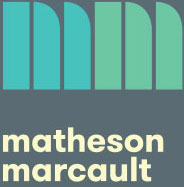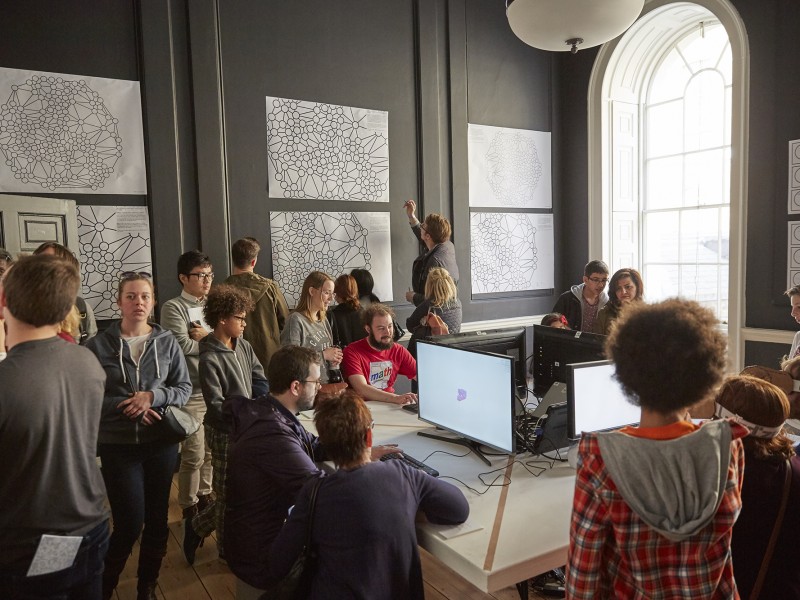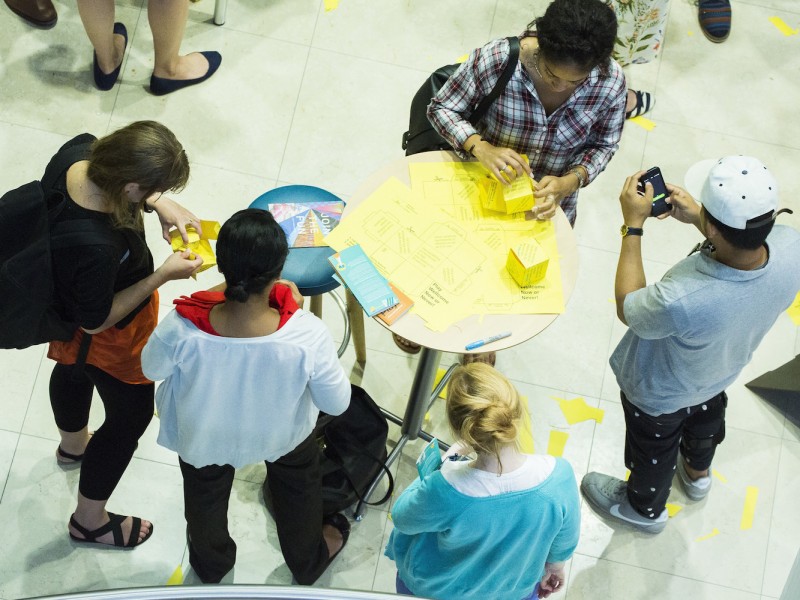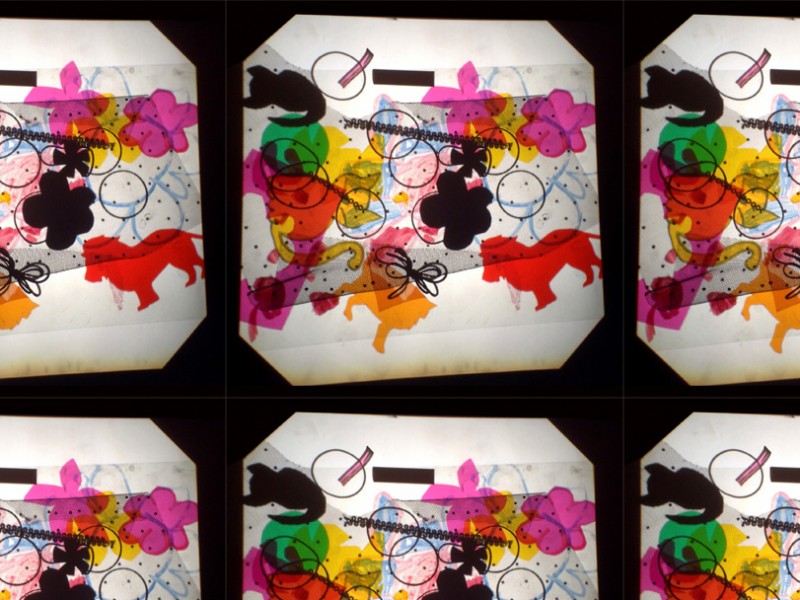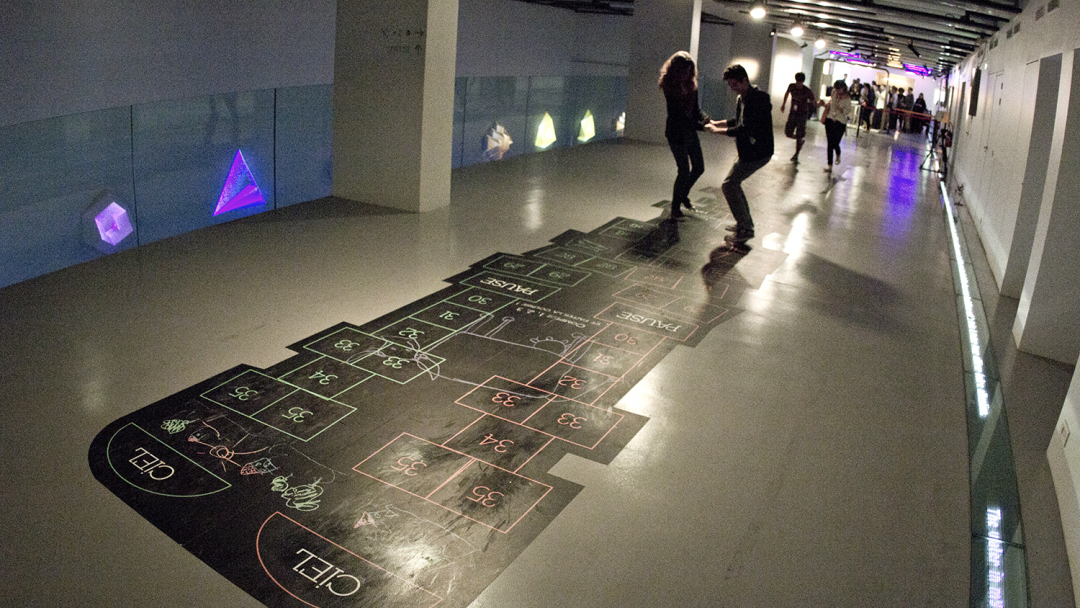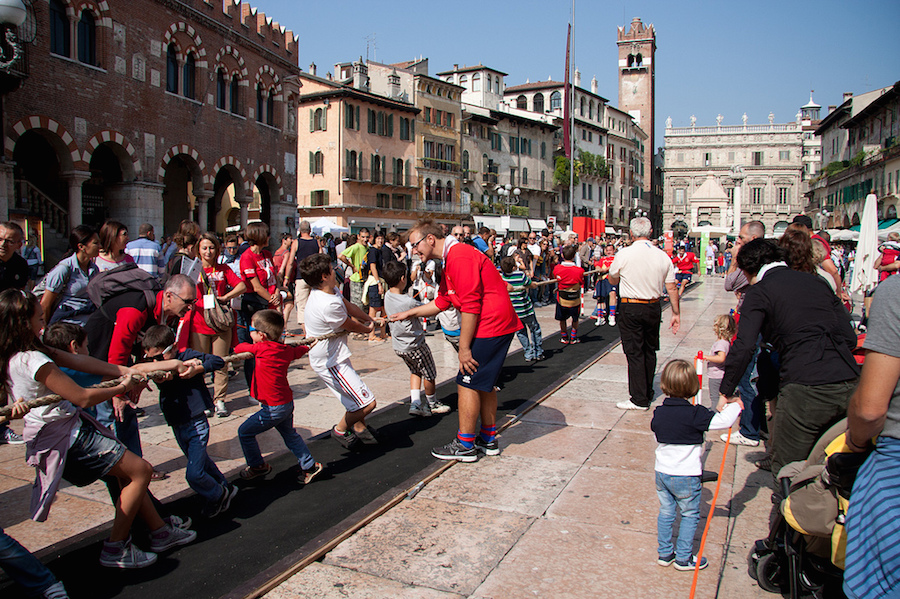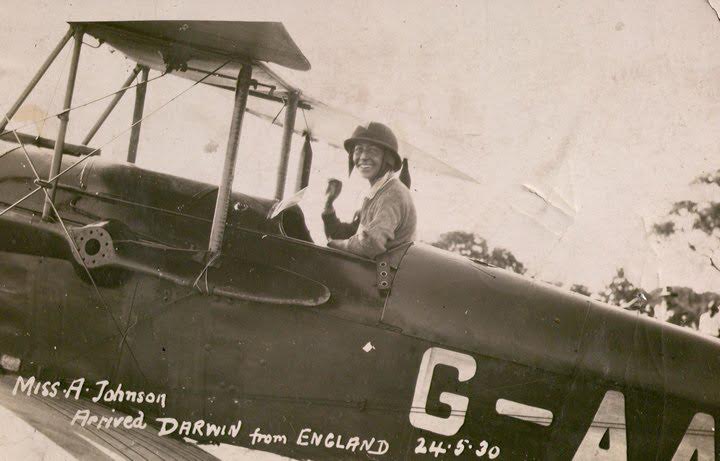As part of our research project for the King’s College London Arts and Humanities Festival, we’ve been interviewing different curators, designers, artists and architects about playful work for public space. This interview is with Heather Kelley, a game designer, digital artist, and media curator. She co-curated the groundbreaking 2012 exhibition Joue le jeu / Play Along at La Gaîté lyrique in Paris, France, and is co-founder of Kokoromi, an experimental game collective. She’s worked on console games, physical installations, VR and pretty much every area of game design.
One of her games, Trente Pas entre Terre et Ciel (shown above, and co-created with Oscar Barda of Them Games), is a two-player jumping game derived from hopscotch which we showed at Now Play This earlier this year, so we started out by talking to her about it. This is an edited extract from the full interview, which will be included in our report at the end of the research project.
US: So I read something in your talk about making games in institutional contexts (PDF). You mentioned there that when you were making Trente Pas you spent a load of time trying out different sizes of squares for people to hop in.
HEATHER: Mmm. So we wanted the squares to convey information inherently, so things like the direction the number was facing and things like that were important because they would say what way the player should be facing at that moment.
And they had to be also accommodating of different abilities and sizes of humans. If they were too small like a child-size square it’d be too small for an adult, and it might symbolise that it’s not for them. But if it’s too big then there’s the opposite problem. Kids would think it wasn’t for them. So it was finding this sweet spot between the size of the square and also the distance of the squares from each other, because you want them to be encouraging movement! You want people to hop! But you don’t want them to have to do the long jump to get there.
And also because it’s a game for two people the distance between squares was important because sometimes you wanted those people to have to pass by each other very close, and at other times you wanted them to be apart from each other – although they might be holding hands, physically connected but at arm’s length.
US: And do you remember how big they were, the squares? What is the perfect definitive researched tested proper hopscotch size?
